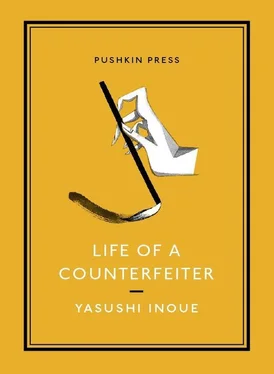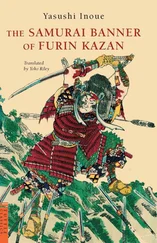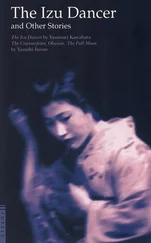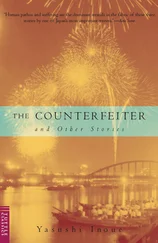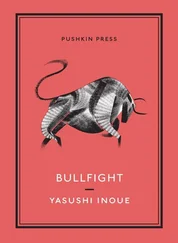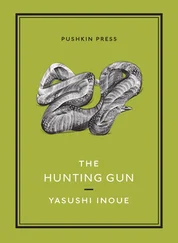He didn’t really do any work after he settled down. Every so often he would head off to Yonago, Okayama, Tottori, and so on, with scrolls and antiques, then return with new ones, so he must have gone on being a sort of dealer, if only on a small scale, even after he retired to the countryside.
Hōsen hadn’t made a particularly bad impression on the villagers, and he never caused others any trouble, so early on they called him “Mr. Hōsen, Mr. Hōsen,” imbuing the name with a certain degree of respect; over time, as his trips became less frequent, and then as it came to be known that he was fooling around with gunpowder, even taking sparklers he had made to sell to toy stores in Yonago, people started referring to him as “Old Hara” instead.
Needless to say, Hōsen wasn’t a genuine fireworks maker; he made them illicitly. He seems to have been working with explosives from the time he moved to the village — once, late at night, the villagers had raised a ruckus when a ball of fire shot up into the sky over Hōsen’s house, only to be stunned when they learned afterward that he had launched what was known as a “falling star.”
In his third year in the village, Hōsen lost three of the fingers on his right hand when some of his gunpowder exploded. After this incident — in part because people were disgusted that he was handling such a nasty substance — his popularity plummeted. Hōsen himself grew oddly arrogant in the wake of the accident, as if he had been wronged somehow, and from then on he no longer tried to conceal what he was doing, and began making his fireworks almost openly.
For the most part the villagers kept their distance from Hōsen’s house, but whenever they chanced to look in on him they would find him sitting in the former cowshed, now remade into a workspace, preparing various types of toy fireworks — evidently orders from Yonago or some such place.
Half a year or so after Hōsen lost his fingers, he and Asa separated. Even Ogami felt he couldn’t just stand by and watch when that happened, so he played the middleman, going to meet with Asa at her parents’ house in Shōyama to ask her to come back to Hōsen, but try as he might she never said anything but I won’t do it . Two or three other neighbors took their turns going to Shōyama as well, but to no avail. In the end, Hōsen gave up on their relationship, seeing how deeply Asa wanted to be rid of him. The villagers didn’t really hold it against Asa that she had abandoned her husband of so many years. His right hand, with its three missing fingers, was dreadful to look at, and when you stopped to think about it there was something so dismal in the image of him toying with his gunpowder in the dim workroom that you could see even his wife might get fed up.
Hōsen’s finances improved somewhat once he started making fireworks, though since he was doing it illegally he couldn’t be too open about it, and it seems he was quite liberal — even a bit too liberal — when the time came to make donations to village road projects, and in the customary monetary gifts neighbors made at weddings and funerals. Once the police came after him, and he was dragged off to the station in a nearby town, but he must have smooth-talked his way out somehow because he seemed not to have paid a fine, and he kept working on his fireworks in the dark workroom just as before.
In the end, Hōsen continued his solitary existence in the village for almost a decade, until his death in 1940. He must have gotten his hands on a smallish sum of money at some point, because while on extremely rare occasions someone would see him working on what appeared to be fireworks, for the most part he spent his last three years sitting on the veranda, or lying there, doing nothing but gaze off into space. Still, when summer came he would make the boys in the area as many fireworks as they wanted, accepting small payments in recompense. When pressed he would occasionally carry a load of his fireworks to a nearby village, where he would launch them for their summer festival or some similar event, so that people elsewhere came to regard him—“Old Hara,” as they said — with greater affection than his own neighbors.
Hōsen’s death came completely unexpectedly. One morning, when the rains that had been falling for ages finally let up, someone from a neighboring house, perhaps a hundred meters away, realized he hadn’t seen Old Hara for two or three days, and when he went to check in on him he found him sprawled out face down in the earthen-floored room. Hōsen’s body was cold enough that some hours must have passed since he died, and rigor mortis was setting in. He had died of a stroke.
The intriguing thing about Hōsen’s death is that he was about to do a painting when it happened. He had spread two folded blankets on the floor of the storeroom, and neatly lined up a few dishes holding paints and, beside these, the box holding his inkstone with five painting brushes on its lid — their tips, too, precisely aligned. A single sheet of fresh white paper had been centered on the blankets, spread out so that there wasn’t a wrinkle. He had not yet begun to paint.
Presumably Hōsen had gotten everything ready, then recalled something he needed to do and gone into the earthen-floored room, where he collapsed.
“Did Hōsen do any painting toward the end of his life?” I asked Ogami.
“No, I don’t think he did,” he said. “But he was a painter at heart, of course — I suppose he must have sensed death coming, and wanted to paint one last time. Anyway, I doubt he could have painted anything worth looking at with three fingers gone.”
There was something touching in the story of Hōsen’s death, even if he had been a counterfeiter. For some reason, I found myself thinking he hadn’t really intended to paint a picture; that this wasn’t what the sheet of paper lying there, unmarked by a single stroke of his brush, meant. It struck me that perhaps he had simply wanted to be surrounded by those painterly implements.
After Ogami had told me what he knew of Hōsen, as I was preparing to leave he suddenly had a thought. “Come to think of it,” he said, “I believe there are some notes Old Hara wrote in one of the cabinets in your storeroom. About fireworks, I think. We came across them at the time of the funeral, and some of the young men put them away for safekeeping in the Youth Center, thinking they might come in handy sometime.”
There was one cabinet in the storeroom of the house we were renting that we had agreed to leave untouched, just as it had been when the building was still a Youth Center. It held various items that the young men of the village held in common.
I opened the cabinet as soon as I got back. It was packed with all kinds of useless papers: records of festival donations, minutes of youth group meetings, manuscripts for speeches, that sort of thing. Among these scraps, however, was a hand-bound notebook made of hanshi -sized paper, on the cover of which was written, in skillful calligraphy, “The Essentials of Firework Preparation.” The imposing title belied what appeared to be simply a collection of Hōsen’s notes on the fireworks he had made. Turning to the first page, I found the title: “Misty Blossom — Red Mist — Snowfall.”
To make the star, first prepare a safflower core. When it has dried, mix clay with chrysanthemum powder, kneading thoroughly with water until soft, then cut and blend in approximately 1.5 % of a magnesium stick, put the mixture in a bowl, and thoroughly coat the core. Once it is evenly covered, prepare a powder from 100 monme chrysanthemum and 10 monme seeds and sprinkle it all over, then roll into a ball. Repeat as necessary until the star is a good size, perhaps four or five sun across, then finish with a layer of bursting powder. Note, however, that it is necessary to sun-dry it completely after each application. Use a 4.55 or 6.3 sun core.
Читать дальше
